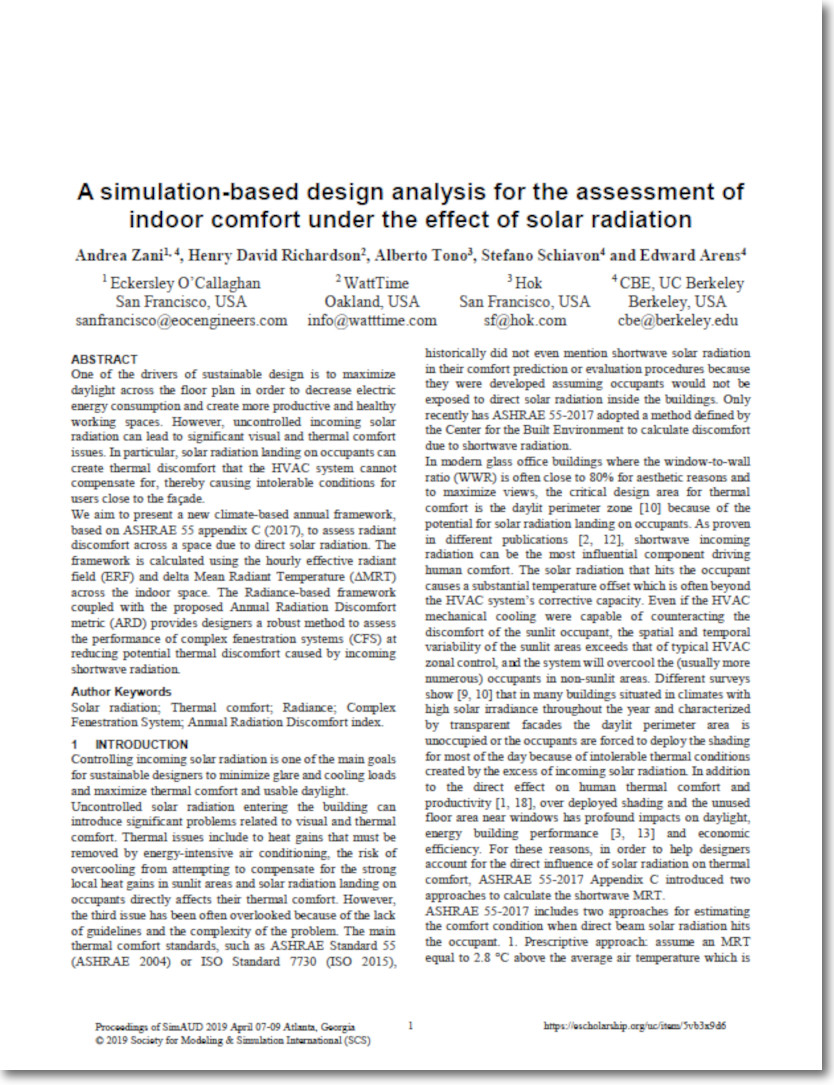Simulating Solar Radiation Discomfort
A simulation-based design analysis for the assessment of indoor comfort under the effect of solar radiation
Role: Co-Author
Co-Authors: Andrea Zani [Eckersley O’Callaghan], Alberto Tono [HOK], Stefano Schiavon [Center for the Built Environment, UC Berkeley] and Edward Arens [Center for the Built Environment, UC Berkeley]
One of the drivers of sustainable design is to maximize daylight across the floor plan in order to decrease electric energy consumption and create more productive and healthy working spaces. However, uncontrolled incoming solar radiation can lead to significant visual and thermal comfort issues. In particular, solar radiation landing on occupants can create thermal discomfort that the HVAC system cannot compensate for, thereby causing intolerable conditions for users close to the façade. We aim to present a new climate-based annual framework, based on ASHRAE 55 appendix C (2017), to assess radiant discomfort across a space due to direct solar radiation. The framework is calculated using the hourly effective radiant field (ERF) and delta Mean Radiant Temperature (ΔMRT) across the indoor space. The Radiance-based framework coupled with the proposed Annual Radiation Discomfort metric (ARD) provides designers a robust method to assess the performance of complex fenestration systems (CFS) at reducing potential thermal discomfort caused by incoming shortwave radiation.
Article available at eScholarship
